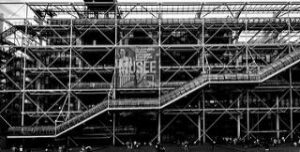Duct Insulation Comes with Code Requirements for Maximum Efficiency

Most ductwork is made of a relatively light, thin metal. The sections of ductwork are fitted tightly together and the connections are sealed mechanically with a specialized sealing material called mastic, or with other methods that prevent air leaks and ensure ductwork efficiency. To increase efficiency even further, ductwork is insulated to prevent additional energy loss through the material of the ducts themselves. Poorly insulated ducts can lose 30 percent or more of the energy spent to condition the air that flows through them. For this reason, it’s important that HVAC professionals and business owners pay attention to duct insulation and make sure it’s properly done according to prevailing industry standards.
Duct insulation code sources and authorities
Reliable and authoritative resources for duct insulation include:
- International Mechanical Code (IMC) 2009 and 2012
- Internal Energy Conservation Code (IECC) 2009 and 2012
- ASHRAE 90.1-2007 and 2010
R-value
Duct insulation must conform to requirements for R-value. The R-value of insulation is a rating of effectiveness. It indicates how well the insulation resists the flow of heat from a warm area to a cooler area. The R-value will indicate how well the insulation will keep heat out of your home or commercial facility in the summer and inside during the winter. Higher R-value numbers mean better and more efficient levels of insulation.
Climate zones
The insulation code sources divide the United States into a variety of climate zones, based on factors such as local seasonal temperatures, precipitation and other climate characteristics. Each climate zone requires insulation of a different R-value. Delaware is part of climate zone 4, while New Jersey, Maryland and Pennsylvania is part of zones 4 and 5.
Examples of code requirements for insulation in climate zone 4
Different R-levels of insulation are required by IMC 2009 and 2012 and ASHRAR 90.1-2007 and 2010 depending on the location of the ductwork. The following information applies to combined heating and cooling ducts in zone 4 areas:
- R-value of R-6 is required for exterior ductwork or ducts installed in a ventilated attic or an unvented attic above a vented ceiling.
- R-value of 3.5 is required for buried ductwork and ducts installed in an unvented attic with roof insulation or in an unconditioned space (including both ventilated and unventilated crawlspaces).
- There are no R-value requirements for ductwork installed in an indirectly conditioned space.
- Return ducts (ductwork that brings expended air back to the HVAC system to be filtered, reconditioned and redistributed) require insulation with an R-value of 3.5 for exterior ducts and ducts in a ventilated attic or unvented attic above an insulated ceiling. There are no R-value requirements for ductwork installed in other locations.
When designing and installing ductwork systems, keep in mind that the requirements may vary depending on several different factors and the thermal characteristics of the space containing the ductwork. Consult with your local trusted HVAC provider for expert information and application of the relevant standards of duct insulation.
Sobieski Inc.’s goal is to help educate our customers about Plumbing, HVACR, Fire Protection and Alarm Systems in Mechanical, Commercial and Residential settings. For more information about code requirements for commercial ductwork insulation and to view projects we’ve worked on, visit our website!
Image Credit: jrodmanjr







